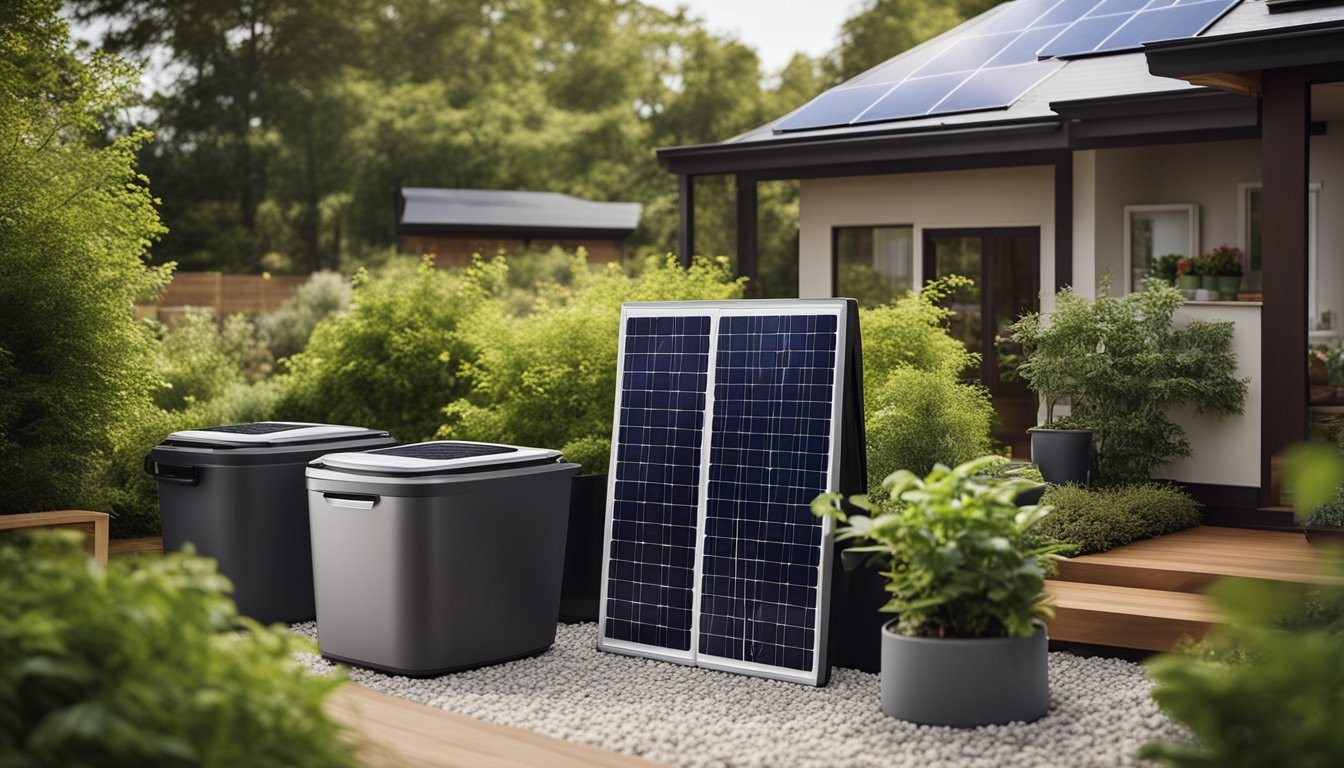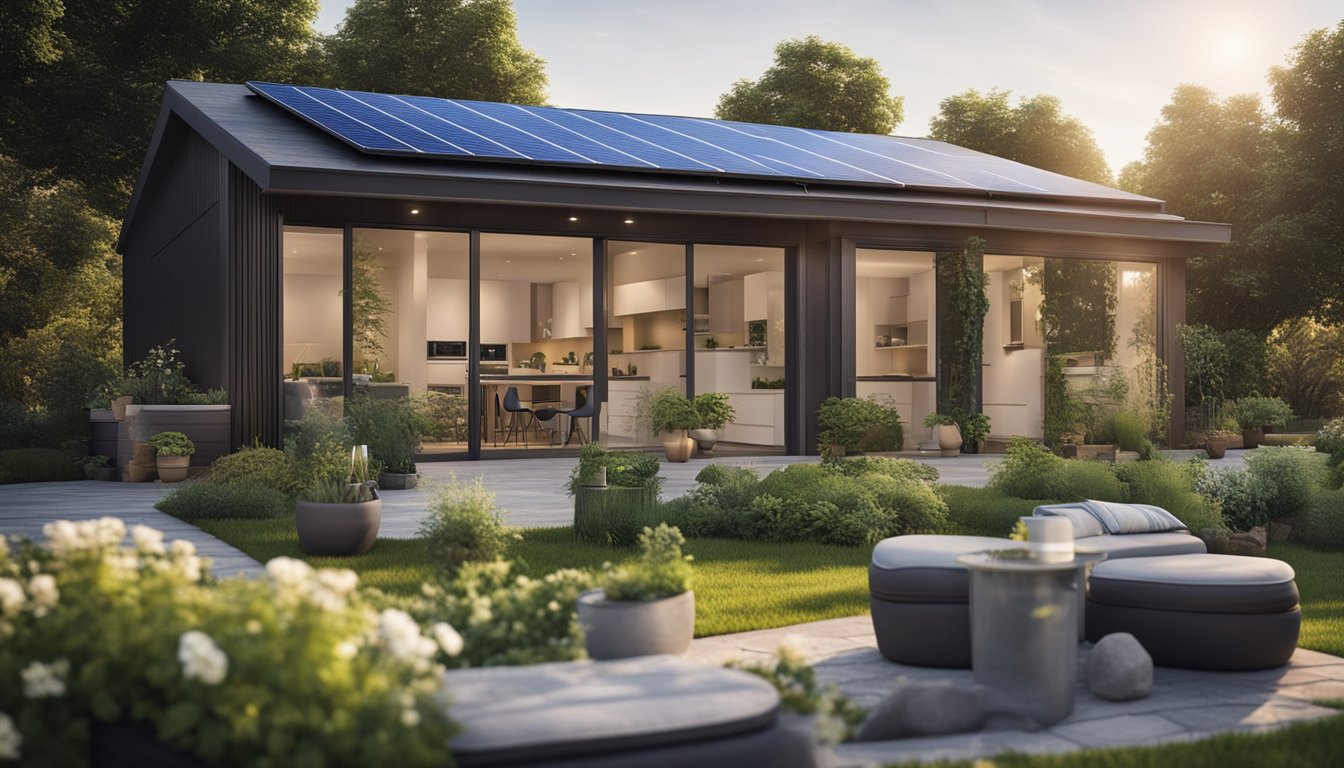Late updated: 15 Nov 2024 08:11
Written by: Daniel Harper
Eco-Friendly Home Energy Efficiency Tips: Smart Ways to Save and Sustain
Living in an eco-friendly home isn't just a trend; it's a responsible choice for our planet. By maximising energy efficiency, we can significantly reduce our carbon footprint. Improving energy efficiency not only lowers greenhouse gas emissions but also saves us money on utility bills. Let's explore simple yet effective ways to create a more sustainable living environment that's good for the earth and our wallets.

Switching to energy-efficient appliances is a straightforward step that can make a significant impact. Incorporating green technologies, such as low-flow fixtures and LED lighting, adds up to considerable savings. Smart technology also allows us to manage energy use more effectively, making our homes both efficient and future-ready.
In the quest for a sustainable home, adding renewable energy sources like solar panels can further cut emissions. Together, these improvements nurture a greener lifestyle while offering the comforts and conveniences we've come to expect. Our homes reflect our commitment to the environment, transforming into powerful allies in the fight against climate change.
Key Takeaways
- Maximise energy efficiency with insulation and air sealing.
- Incorporate renewable energy and smart technology for a greener home.
- Reduce carbon footprint and greenhouse gas emissions effectively.
Maximising Energy Efficiency Through Insulation and Air Sealing
Insulation and air sealing are crucial strategies for reducing energy consumption and enhancing the comfort of our homes. These methods can substantially decrease energy bills and improve indoor climate control efficiency.
Benefits of Proper Insulation
Proper insulation is essential for reducing heat transfer between inside and outside. Materials like fibreglass insulation and spray foam can significantly diminish energy loss. Insulating various parts of the home, such as the attic, walls, and basement, helps maintain temperature consistency.
In addition to reducing reliance on heating and cooling systems, proper insulation can lower energy bills by up to 10%. Adequate insulation is vital for achieving an energy-efficient home. Adding window treatments, like thermal curtains, further enhances this effect by reducing heat exchange.
Air Sealing Techniques
Air sealing targets leaks in the building envelope, such as cracks around doors and windows. Common techniques include weather stripping and caulking, which effectively block unwanted air flow. This practice creates a tighter seal, improving energy retention.
It's not just about blocking drafts; sealing air leaks prevents moisture build-up and improves indoor air quality. By focusing on typical problem areas like attic hatches, basements, and ductwork, we can create a more comfortable home environment. Energy savings from sealing can complement the benefits gained from insulation, making it a vital component of a holistic energy efficiency strategy.
Incorporating Renewable Energy and Smart Technology

Integrating renewable energy and smart technology in our homes offers significant efficiency gains. We can harness solar power and use advanced smart thermostats to optimise heating and cooling. Energy-efficient appliances and LED lighting further contribute to reducing energy consumption and costs.
Solar Power Integration
Solar panels have become increasingly popular as a renewable energy source for homes. By installing solar panels, we can convert sunlight into electricity, which reduces reliance on traditional power grids. The initial investment might be significant, but the long-term savings on utility bills are compelling.
Homeowners may benefit from government incentives and tax credits, which can offset installation costs. To maximise efficiency, it's crucial to assess our home’s roof orientation and shade patterns. Regular maintenance ensures panels operate at peak performance, contributing to sustainable energy use. As technology advances, solar panels become more affordable and efficient, making them a viable option for many households seeking self-sufficient energy solutions.
Advancements in Smart Thermostats
Smart thermostats offer a modern solution to managing our home's temperature efficiently. By using these devices, we can automatically adjust heating and cooling based on our daily schedule and preferences. Features such as learning algorithms and remote access via smartphones enhance convenience and energy savings.
Installing smart thermostats can help us reduce wasted energy by tailoring heating and cooling to actual needs. Many models also provide insights into usage patterns, enabling us to identify further opportunities for efficiency improvements. Choosing models compatible with our existing HVAC systems is essential for seamless integration, ensuring optimal climate control with minimal effort. As part of a broader home automation system, smart thermostats are a key component in creating an energy-efficient home.
Energy-Efficient Appliances and Lighting
Investing in energy-efficient appliances and lighting is another effective strategy. Appliances with the Energy Star label are designed to use less energy without sacrificing performance. By selecting such appliances, we can significantly cut electricity usage and lower utility bills.
LED lighting is an excellent choice for environmental and economic reasons. LED bulbs use less electricity and have a longer lifespan than traditional incandescent bulbs. This longevity reduces the frequency of replacements, further cutting costs.
Additionally, by incorporating advanced control systems, such as dimmers and motion detectors, we can optimise lighting settings and improve our home's overall energy efficiency. Together, these technologies create a sustainable living environment that conserves resources and reduces carbon footprints.
Frequently Asked Questions

Improving home energy efficiency can seem overwhelming, but with targeted actions, significant savings and sustainability can be achieved. Understanding the right choices for your home, whether through minimal investments or when planning new builds, is key to enhancing energy efficiency.
How can I improve my home's energy efficiency on a limited budget?
Start by replacing incandescent bulbs with LED lights, which consume less energy. Sealing gaps and adding insulation help maintain temperature. Utilizing window treatments can reduce heating and cooling costs, and regular maintenance of filters ensures systems run efficiently.
What are some examples of energy-efficient home designs?
Incorporating natural lighting can reduce dependence on electric lights. Passive solar designs, which optimise heat gain and loss, enhance efficiency. Homes built with sustainable materials and equipped with energy-saving appliances illustrate this approach.
Which features should I include in a new home to ensure it is energy-efficient?
Consider installing energy-efficient windows and doors to minimise heat loss. Integrating smart home systems for monitoring energy use can lead to informed decisions. Utilising high-efficiency HVAC systems and renewable energy sources further promote savings.
What are the best renewable energy sources for a residential property?
Solar panels and wind turbines are popular options for homes looking to generate renewable energy. Geothermal systems can also provide efficient heating and cooling solutions. The choice may depend on regional climate and specific property conditions.
How can I reduce my household's electricity consumption effectively?
Invest in energy-efficient appliances and ensure they are used wisely. Employ smart power strips to minimise standby power consumption. Encouraging behaviours such as turning off lights when not in use and unplugging devices can further cut energy use.
What considerations are crucial when building an energy-efficient home for a school project?
Emphasise sustainable building materials and ensure proper insulation throughout the structure. Design should maximise natural light and possibly incorporate renewable energy solutions like solar panels. Include energy-efficient fixtures in your plans to demonstrate practical savings.
